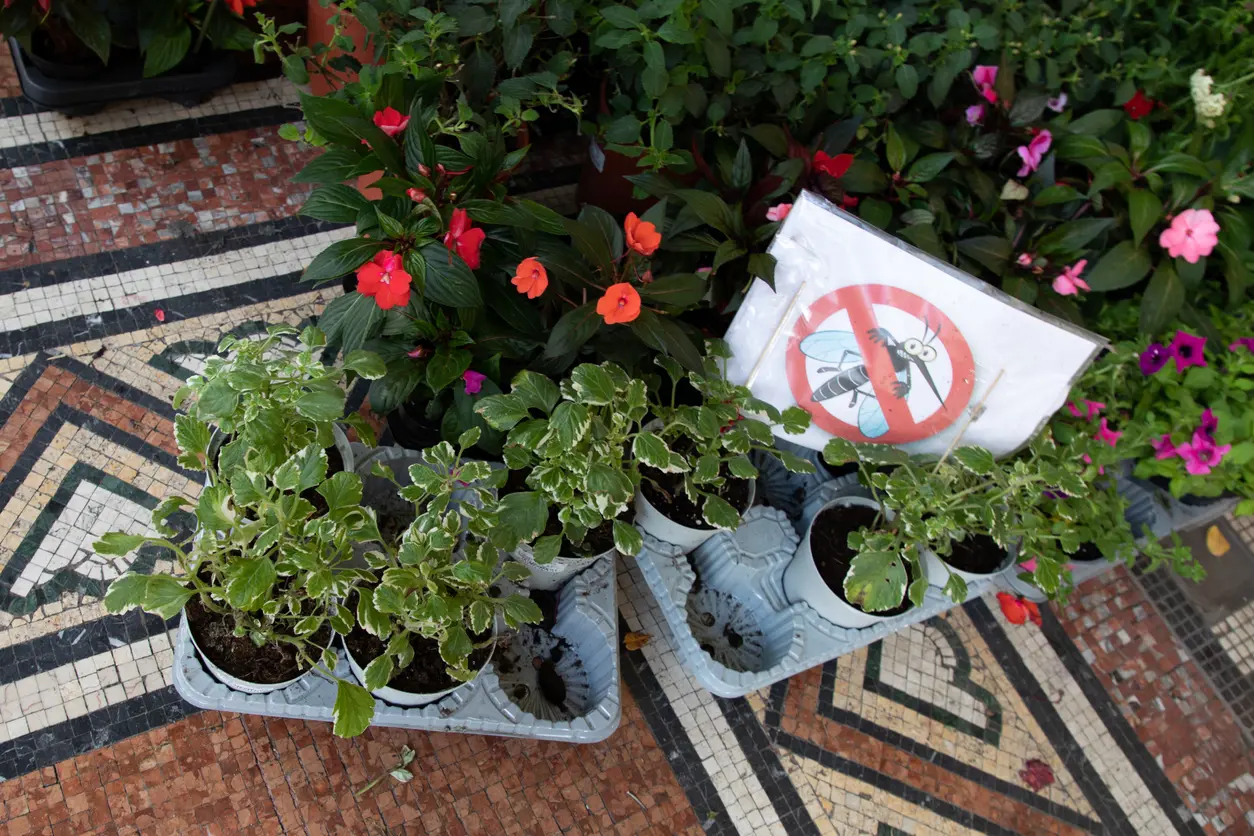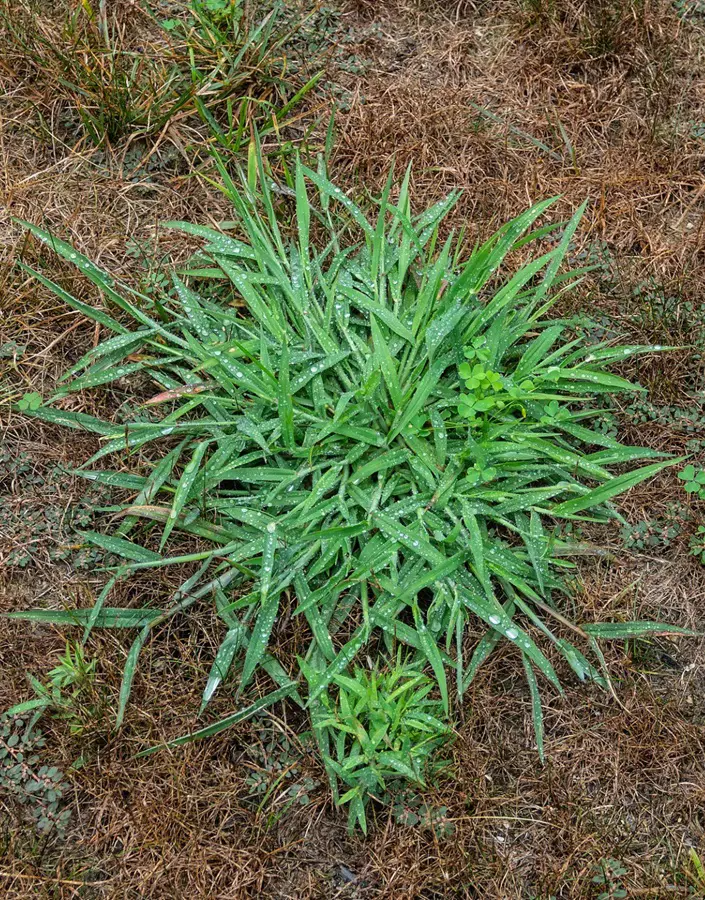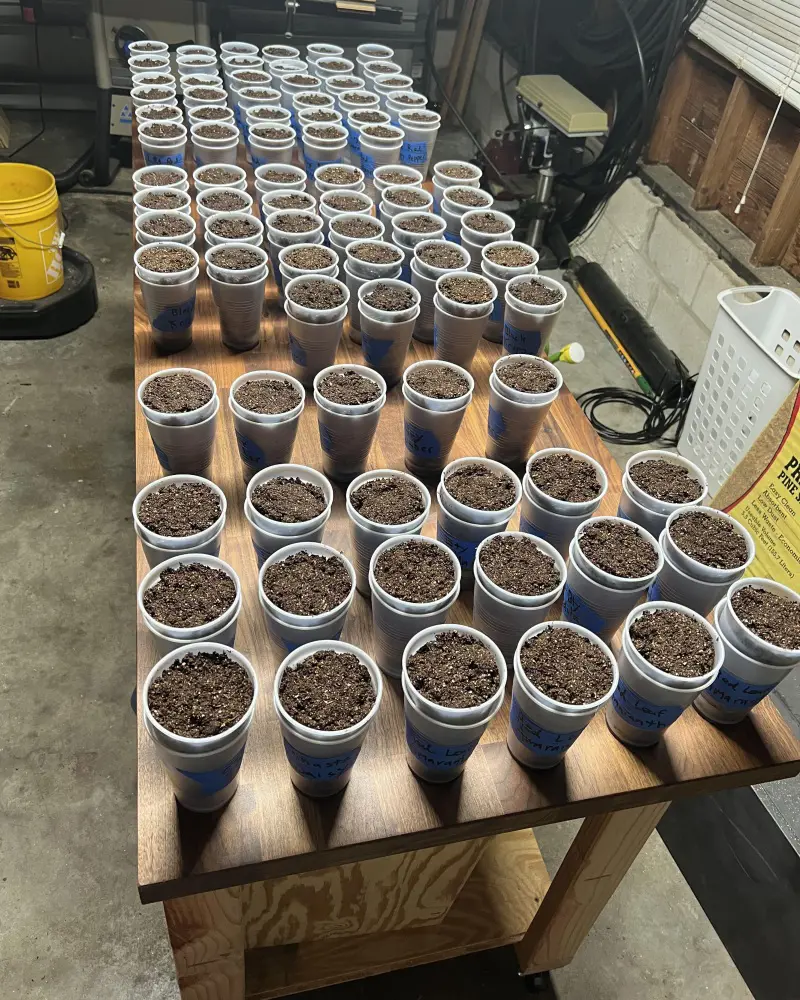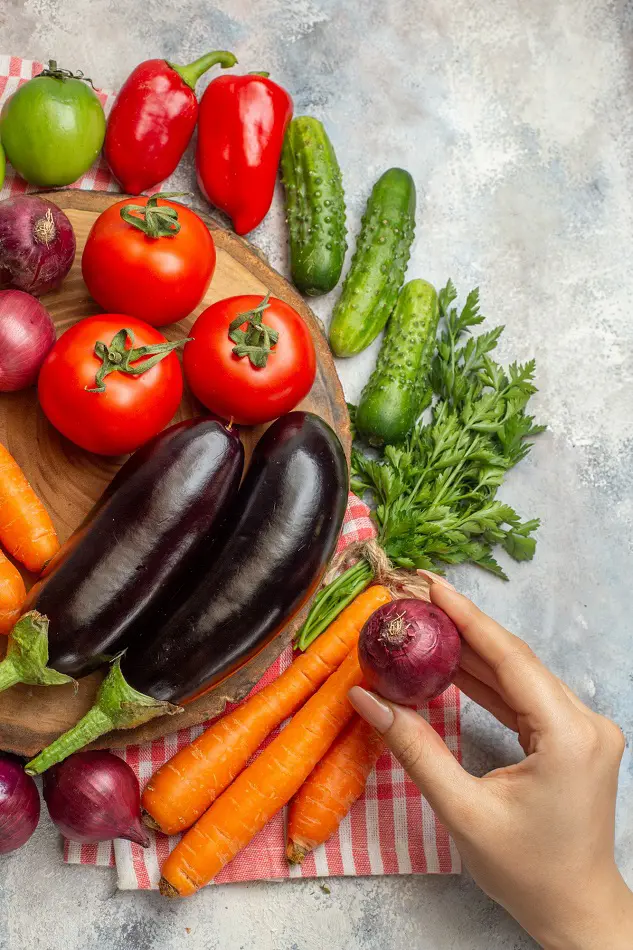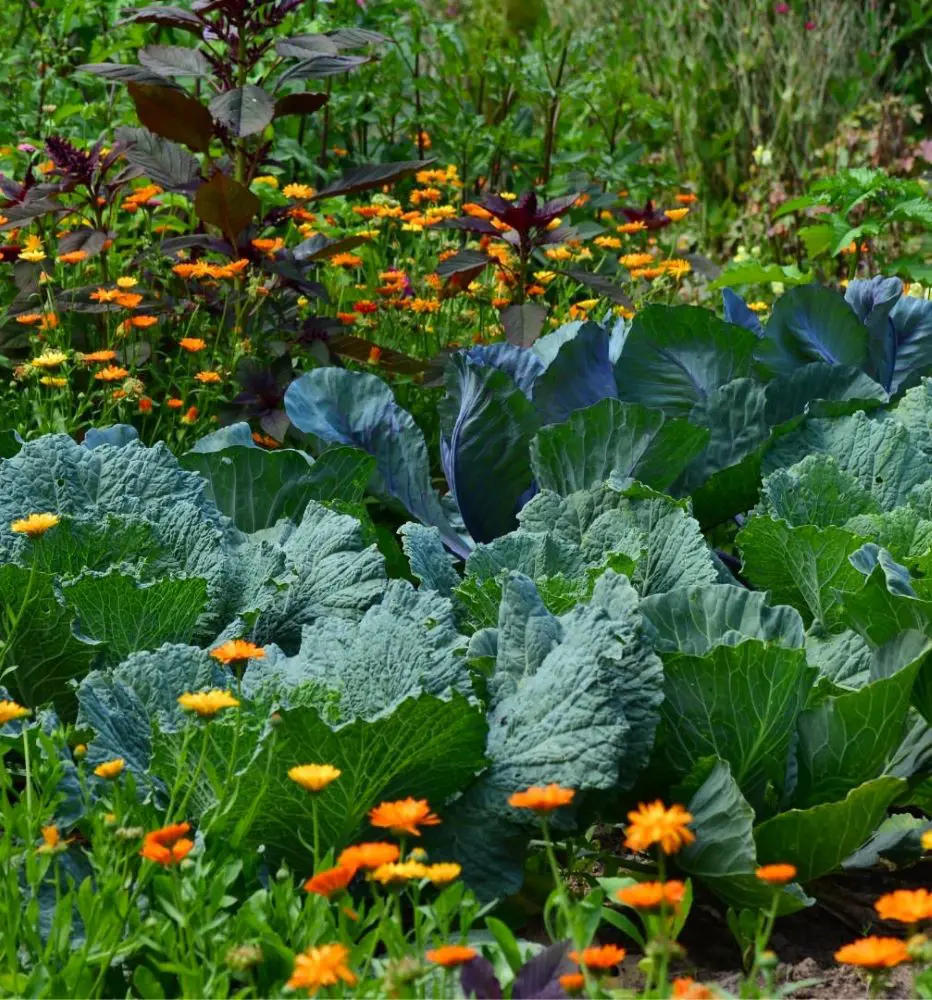
Companion planting is a gardening technique where different plants are grown close to each other to help them grow better. This method can improve plant growth, keep pests away, and make the garden healthier.
Using a chart for companion planting, you can easily see which vegetables, herbs, and flowers grow well together and which should be kept apart.
| Asparagus | Calendula, Petunias, Tomatoes |
| Broccoli | Cabbage, Brussels sprouts, Cauliflower, etc. |
| Brussels sprouts | Beets, Carrots, Garlic, Mint, Nasturtium, Onions, Peas, Thyme |
| Cabbage | Brussels sprouts, Collard greens, Kale, Kohlrabi, Rutabagas, Turnips, Onions, Potatoes |
| Carrots | Onions, Peas, Radishes, Rosemary, Sage |
| Cauliflower | Celery, Corn, Onions, Radishes, Spinach, Cucumber |
| Corn | Cucumbers, Garden peas, Melons, Potatoes, Squash |
| Cucumber | Beans, Beets, Corn, Onions, Garden peas, Radishes |
| Dill | Broccoli, Brussels sprouts, Cabbage, Corn, Cucumbers, Lettuce, Onions |
| Eggplant | Beans, Catnip, Marigolds, Peas, Peppers |
| Garlic | Cole crops, Eggplant, Peppers, Potatoes, Tomatoes |
| Kale | Dill, Garlic, Lettuce, Mint, Onions, Peas, Peppers, Potatoes, Rosemary, Sage, Spinach |
| Peppers | Basil, Onions, Okra |
| Rosemary | Beans, Broccoli, Brussels sprouts, Cabbage, Carrots, Cauliflower, Kale |
| Strawberries | Caraway, Chives, Lettuce, Onions, Sage, Spinach, Squash |
| Tomatoes | Carrots, Cucumbers, and Squash |
Introduction to Companion Planting
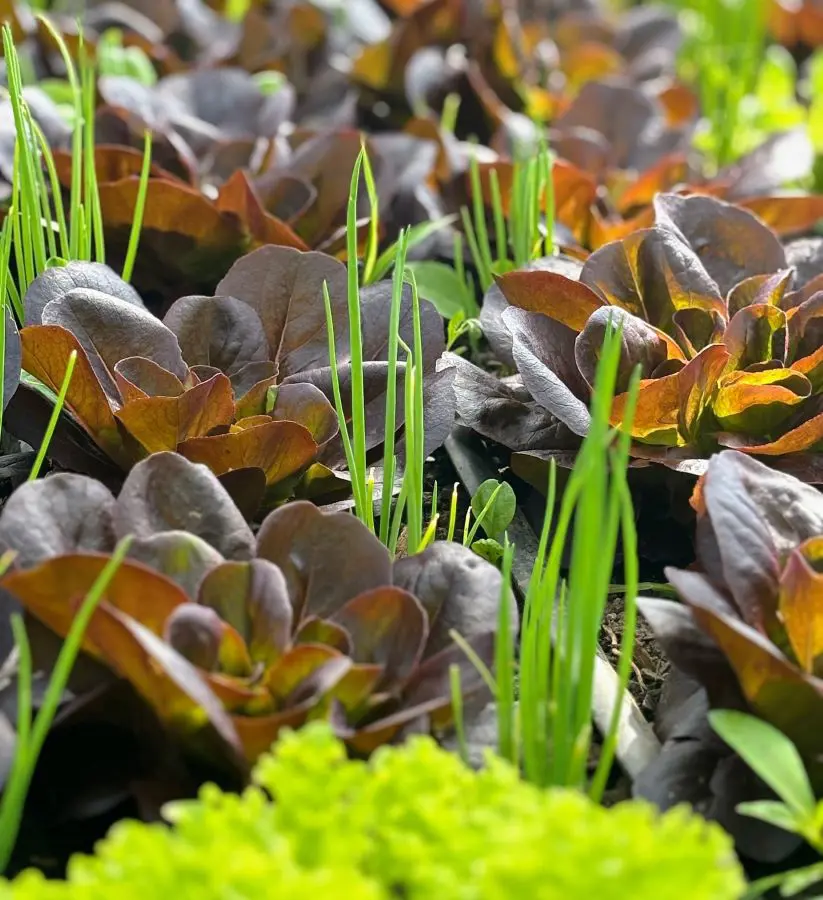
Companion planting is a gardening technique where different plants are grown close together to help each other thrive. This method involves choosing plants that work well together, such as those that repel pests, attract helpful insects, or provide shade and support.
Companion planting has been practiced for centuries. Indigenous peoples in the Americas used it in their traditional farming, with the "Three Sisters" method of planting corn, beans, and squash being a well-known example. In ancient Rome, people planted aromatic herbs alongside vegetables to deter pests.
The practice became more popular in the 20th century, especially in organic farming and permaculture. Organic farmers used companion planting to reduce the need for chemical pesticides and fertilizers, while permaculture enthusiasts emphasized creating sustainable ecosystems by mimicking natural patterns.
Some of the Best Companion Plants
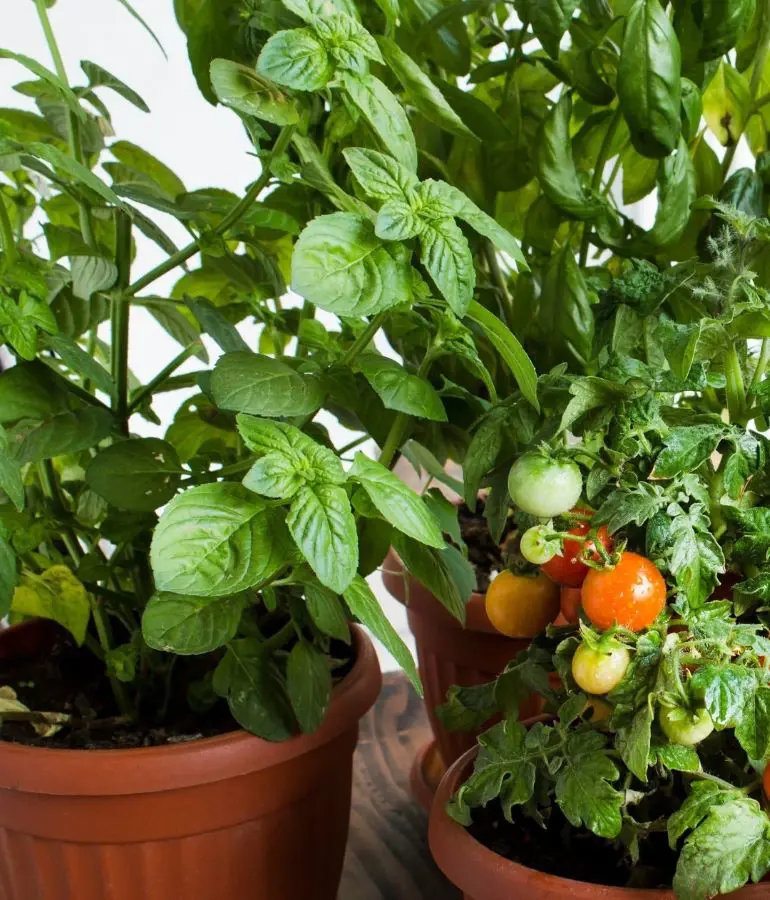
Here are some of the best companion planting combinations for your garden. You can find more in the chart mentioned above.
Vegetables
-
Tomatoes and Basil
Basil contains aromatic oils that repel pests like aphids, mosquitoes, and flies. Planting basil near tomatoes not only helps deter pests but also enhances the flavor of tomatoes.
This pairing is a classic example of companion planting, where basil's pest-repelling properties benefit tomatoes, leading to healthier plants and potentially higher yields.
-
Carrots and onions
Onions emit odors that deter carrot flies, which can damage carrot crops. Similarly, carrots release compounds that repel onion flies. Planting these two crops together can help reduce pest damage to both plants, as their natural defenses complement each other.
Fruits
-
Apple Trees and Marigolds
Marigolds contain compounds that repel pests like aphids, nematodes, and apple maggots, which can damage apple trees. By planting marigolds around apple trees, gardeners can create a barrier against these pests, reducing the likelihood of infestation and improving overall tree health.
-
Blueberries and Azaleas
Blueberries thrive in acidic soil conditions, which are also favored by azaleas. Planting azaleas near blueberry bushes can help maintain optimal soil pH levels for blueberry growth and fruit development.
Additionally, the presence of azaleas can provide aesthetic appeal to the garden while supporting blueberry plants' nutrient uptake and overall health.
Herbs
-
Rosemary and Sage
Rosemary and sage contain aromatic oils that repel pests like cabbage moths, carrot flies, and bean beetles. By interplanting these herbs with susceptible vegetables, gardeners can deter pests and reduce the need for chemical insecticides.
-
Lavender and Thyme
Lavender and thyme are attractive to pollinators like bees and butterflies, enhancing pollination of nearby vegetable and fruit crops. Additionally, these herbs contain volatile compounds that repel pests like moths, mosquitoes, and ants, reducing pest pressure in the garden.
Flowers
-
Marigolds and Roses
Marigolds emit compounds that repel nematodes, aphids, and other pests, making them valuable companion plants for roses.
Additionally, marigolds attract beneficial insects like ladybugs and hoverflies, which feed on aphids and other garden pests, further enhancing pest control in the garden.
-
Sunflowers and Zinnias
Sunflowers provide structural support and shade for neighboring plants while attracting pollinators like bees and butterflies. Similarly, zinnias offer vibrant blooms that attract beneficial insects like ladybugs and parasitic wasps, which prey on garden pests.
Benefits of Companion Planting

Companion planting offers several benefits that enhance the overall health and productivity of a garden. Here are the key benefits:
- Pest Control: Certain plants can repel harmful insects or attract beneficial predators that feed on pests. For example, marigolds can deter nematodes, and planting basil near tomatoes can repel tomato hornworms.
- Improved Growth: Some plants release chemicals into the soil that can promote the growth of their neighbors. For instance, beans fix nitrogen in the soil, which benefits nitrogen-loving plants like corn.
- Better Use of Space: By pairing plants with different growth habits, gardeners can maximize space. For example, planting tall sunflowers with sprawling cucumbers allows both plants to thrive without competing for space.
- Enhanced Soil Fertility: Certain plants, such as legumes, can improve soil fertility by fixing nitrogen, and enriching the soil for other plants.
- Weed Suppression: The dense planting of companion plants can cover the soil and suppress weed growth, reducing the need for weeding.
- Shade and Support: Tall plants can provide shade for sun-sensitive plants, while sturdy plants can offer support for climbing plants. For example, corn can act as a natural trellis for beans.
- Biodiversity: A diverse garden with many different plants can be more resilient to pests and diseases, creating a healthier ecosystem.
- Pollination: Companion plants, especially flowers, can attract pollinators like bees, which help improve the yield of fruiting plants.
How Companion Planting Works
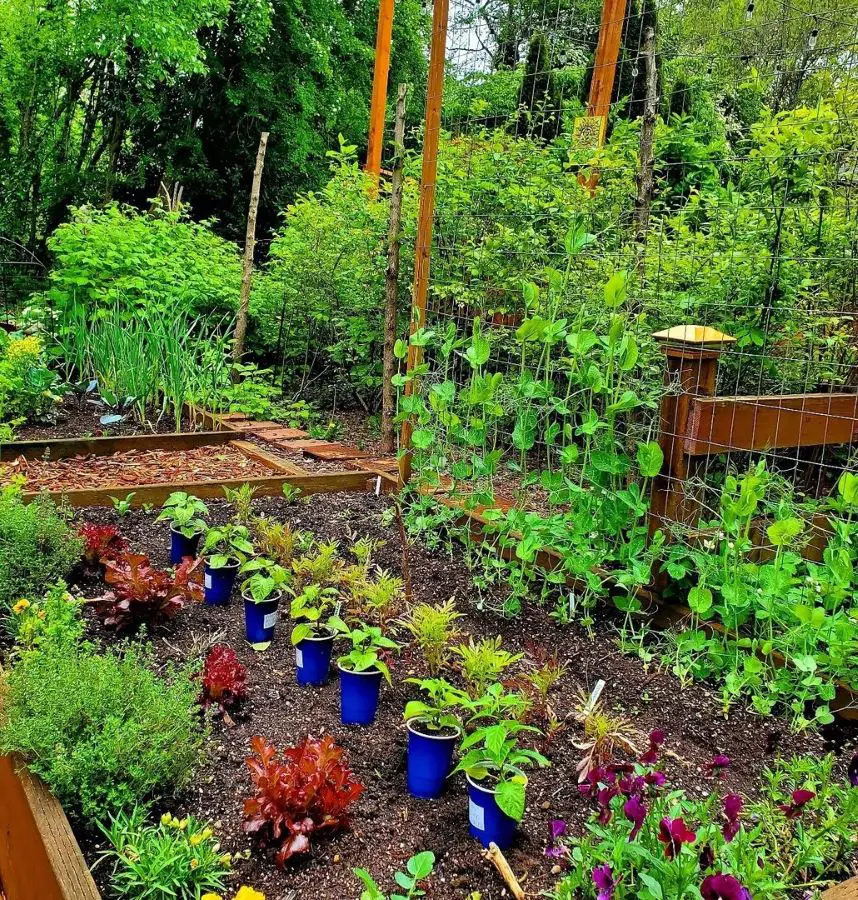
This is a gardening method where different plants are grown close together to help each other thrive. This approach takes advantage of the natural relationships between plants to improve growth, reduce pests, and enhance overall garden health.
Let's explore the magic behind companion planting.
Synergistic Relationships
Some plants have natural abilities to help each other out. For instance, certain plants emit chemicals from their roots or leaves that can repel pests or attract beneficial insects like ladybugs or predatory wasps.
This protection can shield neighboring plants from harmful pests, reducing the need for chemical pesticides.
Allelopathy (Chemical Interactions)
Allelopathy refers to the chemical interactions between plants, where one plant releases substances that affect the growth or behavior of another. For example, marigolds produce allelochemicals in their roots that are toxic to nematodes, microscopic worms that can harm plant roots.
Planting marigolds near susceptible plants can help deter nematodes and keep the soil healthy.
Physical Interactions
Plants can also interact physically to benefit each other. Tall plants can provide shade for sun-sensitive plants during hot weather, preventing them from getting scorched.
Additionally, sturdy plants can act as natural trellises for climbing plants, providing support for their growth. This allows plants to utilize vertical space efficiently and thrive in crowded gardens.
Complementary Traits
Some plants have traits that complement each other, creating a mutually beneficial relationship. For instance, legumes like beans can fix nitrogen from the air into the soil with the help of special bacteria in their roots.
This nitrogen enrichment benefits neighboring plants, especially nitrogen-hungry ones like corn, by improving soil fertility and promoting healthy growth.
Theories and Principles of Companion Planting

Companion planting relies on various theories and principles developed over time through observations and experiments. These help gardeners and farmers understand how plants interact and how they can create a balanced and beneficial environment in the garden. Here are some key theories and principles:
Trap Cropping Theory
The trap cropping theory involves using certain plants as decoys to attract pests away from main crops. These decoy plants, or trap crops, are specifically chosen for their attractiveness to common pests.
By luring pests away from valuable crops, trap crops help protect the main crop from damage.
Pollination Theory
Pollination theory focuses on the role of plants in attracting pollinators like bees, butterflies, and other insects. Certain plants produce flowers with nectar and pollen that attract pollinators, facilitating the transfer of pollen between flowers and promoting fertilization.
Permaculture Principles
Permaculture is an approach to gardening and agriculture that emphasizes sustainability, self-sufficiency, and mimicking natural ecosystems. Permaculture principles include observing and emulating patterns found in nature.
It also includes utilizing natural resources efficiently and creating diverse and resilient garden ecosystems that require minimal inputs of water, energy, and labor.
Polyculture Systems
Polyculture systems involve growing multiple crops together in a way that mimics natural ecosystems. This approach contrasts with monoculture, where large areas are planted with a single crop.
Polyculture systems promote biodiversity, reduce the risk of crop failure caused by pests or diseases, and enhance soil health and fertility through crop rotation and companion planting.
How To Introduce Companion Planting
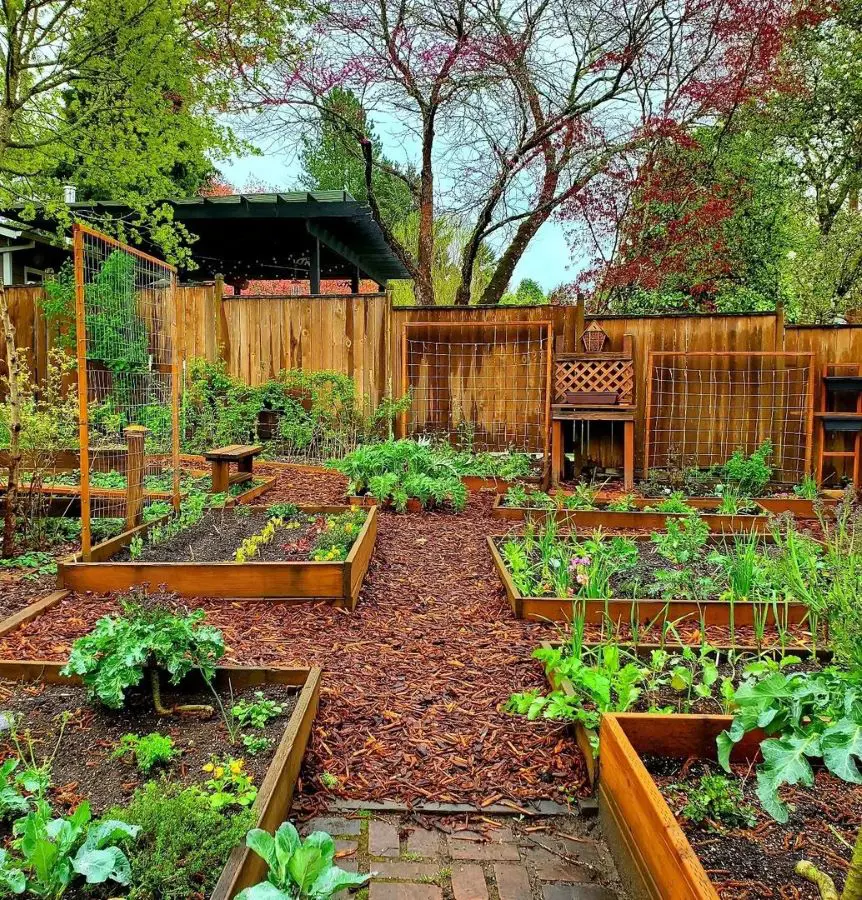
Introducing companion planting into your garden can be relatively straightforward with some research and planning. While it may seem daunting at first, especially for beginners, there are plenty of resources available, such as plant companions chart, guides, and online tutorials, to help you get started.
Here is a brief guide to introduce companion planting:
Design Your Garden Layout
Measure your garden area to understand how much space you have for planting. Based on your companion planting chart, group plants that benefit each other close together. Place taller plants where they will not overshadow shorter plants that need full sun.
Implement the Companion Planting Chart
Follow the chart of companion plants listed above to pair plants correctly. For example, plant basil near tomatoes to improve growth and deter pests. Avoid monocultures (large areas of a single crop) by mixing different vegetables, herbs, and flowers to enhance biodiversity.
Also, plan for crop rotation and successive plantings to ensure soil fertility and reduce pest buildup.
Monitoring and Adjusting
Check your garden frequently to observe plant health and detect any signs of pest or disease issues early. Ensure the soil remains healthy by adding compost and organic matter as needed.
Be flexible and ready to move plants or change strategies if certain combinations are not working as expected.
Additional Companion Planting Tips

In addition to the basic steps of introducing companion planting into your garden, here are some additional tips to enhance your success:
- Plant herbs such as basil, mint, and cilantro alongside vegetables to enrich their taste and scent.
- Utilize carrots and radishes to break up compacted soil, while deep-rooted varieties like asparagus and watermelon draw nutrients from deeper layers of the soil.
- Position taller plants like sunflowers and corn near shorter crops like beans and squash to offer shade and structural support.
- Experiment with various combinations of companion plants to ascertain the most effective pairings for your specific environment and soil composition.
- Strategize your garden layout to include a variety of plants with differing growth patterns, textures, and hues.
- Select companion plants that thrive in your local climate and soil conditions for optimal results.
- Plant dense, low-growing varieties like thyme or creeping rosemary to stifle weed growth.
- Consistently tend to your plants by watering, pruning, and fertilizing them to maintain their vitality and flourishing state.
Common Companion Planting Mistakes to Avoid
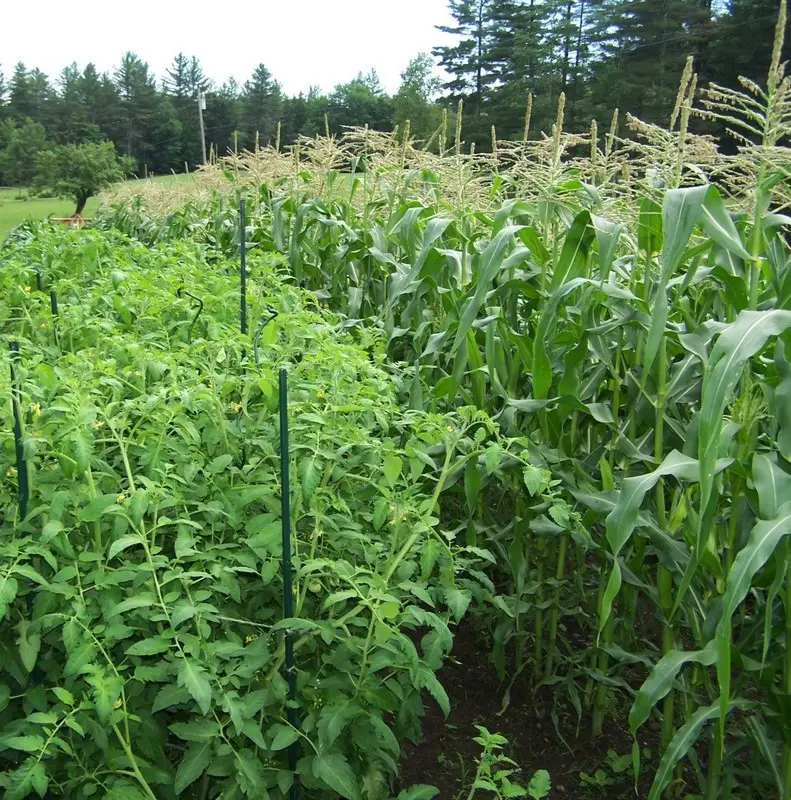
While companion planting can offer numerous benefits to a garden, it's important to recognize that it's not without potential pitfalls or mistakes. Here are some common challenges or mistakes to be aware of:
Planting the Wrong Combinations
Some plants don't get along well when planted together, and this can harm their growth and health. For instance, onions should steer clear of asparagus or beans because they can stunt their growth and snatch nutrients from the soil.
Similarly, tomatoes and corn should be planted apart because they both need a lot of nutrients and could end up taking away from each other.
To prevent this mistake, research which plants make good pals and which ones shouldn't hang out together. Use a companion planting chart or guide to help you figure out where each plant should go in your garden.
Forgetting About Groundcover Plants
Groundcover plants might not get much attention in companion planting, but they can be really helpful. They keep weeds down, cool the soil, and act like a natural blanket.
Don't overlook low-growing groundcover plants like creeping thyme, sweet alyssum, or microclover when planning your companion planting.
Overcrowding Plants
It's tempting to plant many different plants close together, but too much diversity in a small space can cause problems. When plants are too close, they fight for resources, making it hard for them to grow well.
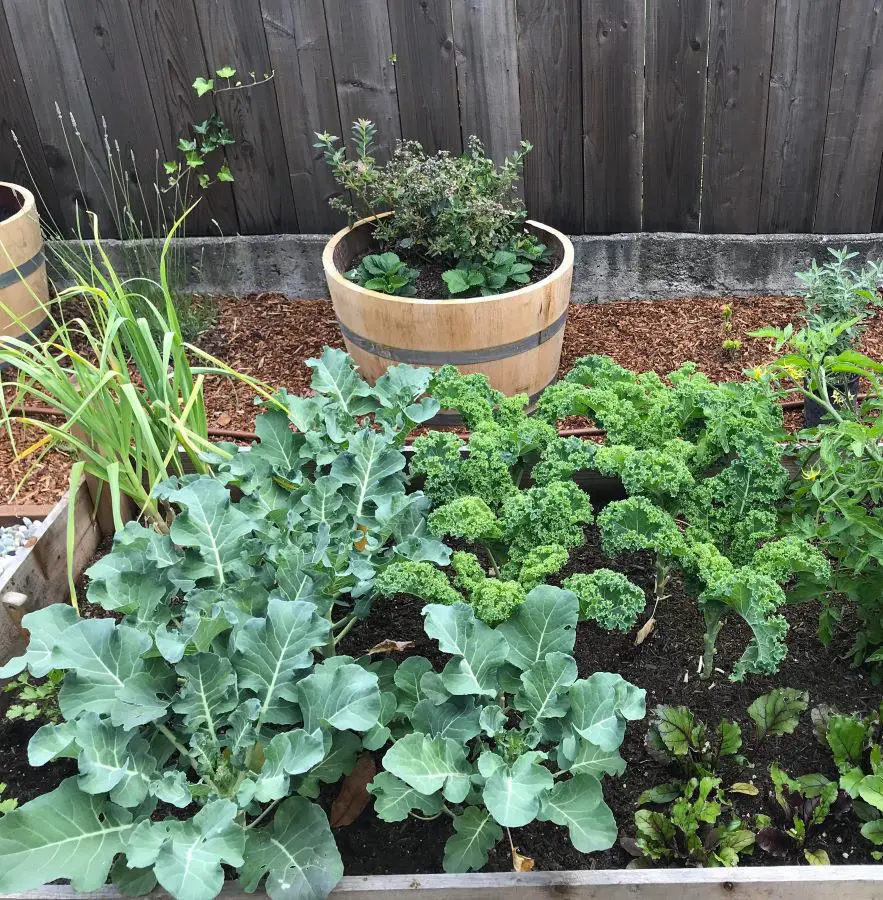
To avoid overcrowding, limit yourself to 1-2 plant combinations per bed or container. Make sure each plant has enough space to grow freely.
Planting Companions Too Late
Timing is super important in companion planting. If you add a companion plant too late, it might not have enough time to settle in and do its job.
For instance, if you're planting basil with tomatoes, it's best to put the basil in the pot with the tomato seedling or wait until the basil has grown for about 6 weeks before planting them together.
Neglecting to Rotate Crops
Crop rotation is a big deal in companion planting, but it's easy to forget. Planting the same stuff in the same spot every year can lead to more pests and diseases in the soil.
To avoid this, switch up your crops every year and keep plants from the same family separated in your garden layout.



